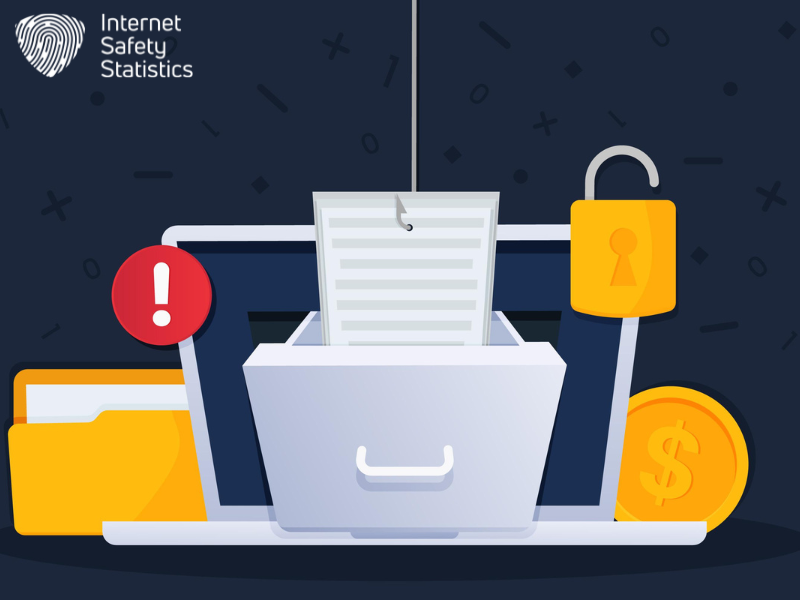
With the increasing reliance on digital platforms, businesses face the ever-growing threat of cyber-attacks and data breaches. As a result, the need for cyber liability insurance has become crucial in safeguarding businesses from potential financial losses. This article delves into the intricacies of cyber liability insurance, its coverage, its cost, and how it can effectively protect businesses.
Table of Contents
What is Cyber Liability Insurance?

Cyber liability insurance is a specialised insurance policy designed to protect businesses from the potentially devastating effects of cyber-related risks. This type of data breach insurance provides coverage for expenses related to data breaches, cyber-attacks, and other similar incidents that may compromise sensitive data or electronic systems.
Understanding the Coverage
Cyber liability insurance typically covers a wide range of expenses associated with cyber incidents, such as legal fees, forensic investigations, customer notification costs, and credit monitoring services. Additionally, it may also include coverage for business interruption losses and cyber extortion expenses.
Types of Cyber Liability Insurance
There are various types of cyber liability insurance policies available, tailored to meet the specific needs of businesses. These may include first-party and third-party coverage, network security liability, and privacy liability insurance, among others.
Here are some of the most common types of cyber liability insurance:
First-Party Coverage
This type of coverage reimburses businesses for the costs they incur as a result of a cyberattack, such as:
- Data breach notification and remediation: This includes the cost of notifying affected individuals, credit monitoring services, and forensic investigations.
- Business interruption: This covers lost revenue and other expenses incurred while a business is recovering from a cyberattack.
- Cyber extortion: This covers the cost of paying a ransom demand to regain access to data or systems.
Third-Party Coverage
This type of coverage protects businesses from liability for damages caused to third parties as a result of a cyberattack, such as:
- Regulatory fines and penalties: This covers the cost of fines and penalties imposed by regulatory bodies for data breaches or other violations.
- Legal fees and settlements: This covers the cost of defending lawsuits and paying settlements to individuals or businesses who have been harmed by a cyberattack.
Errors and Omissions (E&O) Coverage
This type of coverage protects businesses from liability for errors and omissions made in the course of providing technology products or services. For example, if a software company’s product contains a security vulnerability that is exploited by hackers, E&O coverage may help to cover the costs of defending lawsuits from customers who have been harmed.
Media Liability Coverage
This type of coverage protects businesses from liability for claims of defamation, privacy infringement, and other intellectual property violations that may arise from the publication of online content.
Crime Coverage
This type of coverage protects businesses from losses caused by employee theft, fraud, and other criminal activity.
The specific types of cyber liability insurance that are right for a business will depend on its size, industry, and risk profile. It is important to work with an insurance broker to understand the different types of coverage available and to choose a policy that meets the specific needs of your business.
Do I need Cyber Liability Insurance?

Given the prevalence of cyber threats in today’s digital landscape, businesses of all sizes can benefit from cyber liability insurance. Regardless of the industry, any organisation that handles sensitive data or relies on electronic systems can be vulnerable to cyber-attacks and data breaches.
If you’re still wondering, here are some questions to ask yourself to help you decide:
- Do I collect or store any sensitive data, such as customer financial information, medical records, or Social Security numbers?
- Do I rely on my computer systems to conduct business?
- Do I have employees who have access to sensitive data?
- Am I subject to any data privacy regulations, such as HIPAA or PCI-DSS?
- Could a cyberattack cause significant financial or reputational damage to my business?
If you answered yes to any of these questions, then you should strongly consider getting cyber liability insurance.
Here are some of the benefits of having cyber liability insurance:
- It can help you cover the costs of a data breach, such as notifying affected individuals, providing credit monitoring services, and conducting forensic investigations.
- It can help you cover legal fees and settlements if you are sued as a result of a cyberattack.
- It can help you recover from a business interruption caused by a cyberattack.
- It can help you protect your reputation from damage caused by a cyberattack.
The cost of cyber liability insurance varies depending on the size of your business and the type of coverage you need. However, it is generally a relatively inexpensive way to protect your business from the financial risks of a cyberattack.
How Much Does Cyber Insurance Cost?
The cost of cyber insurance can vary significantly depending on several factors, including the size and nature of the business, the extent of coverage required, and the perceived level of cyber risk. Insurers take into account these factors when determining the premium for cyber liability insurance.
The cost of cyber insurance can vary widely depending on a number of factors, including:
- The size of your business: Larger businesses with more data to protect typically pay more for cyber insurance than smaller businesses.
- The type of data you collect and store: Businesses that collect and store sensitive data, such as customer financial information or medical records, typically pay more for cyber insurance than businesses that do not.
- Your industry: Some industries are more likely to be targeted by cyberattacks than others, and businesses in those industries typically pay more for cyber insurance.
- Your risk tolerance: Businesses with a higher risk tolerance may be willing to pay less for cyber insurance, while businesses with a lower risk tolerance may be willing to pay more for more comprehensive coverage.
That said, here is a general range of what you can expect to pay for cyber insurance:
- Small businesses: $500 to $5,000 per year
- Medium-sized businesses: $5,000 to $50,000 per year
- Large businesses: $50,000 to $1 million per year
Getting a Cyber Insurance Quote
Businesses interested in obtaining cyber liability insurance can request insurance quotes from reputable insurers to assess the cost and coverage options available. It is advisable to compare quotes from multiple insurers to find a policy that best suits the business’s needs.
Here’s a breakdown of the process:
Assess Your Risk
Before diving into quotes, take a moment to understand your specific risk profile. Consider factors like:
- The size and type of your business: Larger businesses and those handling sensitive data tend to face higher risks and premiums.
- Your industry: Certain industries, like healthcare and finance, are more targeted by cybercriminals.
- Your security posture: Robust cybersecurity measures can lower your risk profile and potentially earn you discounts.
Gather Information
Once you have a grasp of your risk, compile some key details to share with insurers:
- Annual revenue: This helps insurers gauge the potential impact of a cyberattack on your business.
- Data types stored: Specify the types of data you collect and store, like customer information, financial records, or intellectual property.
- Cybersecurity measures: Outline your existing security measures like firewalls, intrusion detection systems, and employee training.
Compare Quotes
Now comes the shopping around part! Reach out to different insurance providers or brokers and request quotes based on your risk profile and gathered information. Don’t just focus on the cheapest option; compare coverages, deductibles, and the reputation of the insurers.
Understand the Coverage
Cyber insurance policies can vary greatly. Scrutinise the specific coverage offered in each quote, paying attention to the following:
- First-party coverage: This covers your own expenses like data breach notification, forensic investigation, and business interruption.
- Third-party coverage: This protects you from legal liabilities and claims arising from a cyberattack, like regulatory fines or customer lawsuits.
- Limits of coverage: These are the maximum amounts the insurer will pay for each type of claim.
Choose the Right Policy
Select the policy that best aligns with your risk profile, budget, and coverage needs. Don’t hesitate to negotiate with insurers based on your research and comparisons.
What Does Data Breach Insurance Cover?
Data breach insurance provides coverage for a wide array of cyber threats and data breaches that may impact businesses. It encompasses expenses associated with managing a data breach, including legal and public relations costs, as well as notification and credit monitoring services for affected individuals.
What it covers:
Data breach insurance typically offers two main types of coverage:
First-Party Coverage
This covers expenses directly incurred by your business as a result of the breach, such as:
- Notification costs: Informing affected individuals and regulatory bodies about the breach.
- Credit monitoring and identity theft protection: Offering these services to impacted individuals to help them monitor and safeguard their personal information.
- Forensic investigation: Determining the nature and scope of the breach to identify the vulnerabilities and prevent future attacks.
- Public relations and crisis management: Addressing reputational damage and restoring public trust.
- Business interruption: Covering lost revenue and additional expenses if your operations are disrupted due to the breach.
Third-Party Coverage
This protects your business from legal liabilities arising from the breach, such as:
- Regulatory fines and penalties: Covering potential fines imposed by data protection authorities for non-compliance with regulations.
- Legal defence and settlements: Paying for legal representation and any settlements reached in lawsuits filed by affected individuals or third parties.
Additional Coverages
Some policies may also offer additional coverage for:
- Cyber extortion: Reimbursing ransom payments demanded by attackers in exchange for releasing stolen data.
- Data restoration: Covering the costs of restoring lost or corrupted data.
What It Doesn’t Cover
It’s important to note that data breach insurance typically excludes certain types of losses, such as:
- Pre-breach losses: Expenses incurred before the breach occurred, such as those related to inadequate security measures.
- Intentional acts: Losses caused by deliberate misconduct by your own employees or contractors.
- Reputational damage: While public relations assistance may be covered, the long-term reputational impact of a breach is generally not covered.
As businesses become increasingly reliant on digital infrastructure, the need for cyber liability insurance has become undeniable. It’s no longer a luxury but a necessity, an investment in resilience and a guarantee of continuity in the ever-evolving digital arena. It’s as important to choose the right insurance that covers the cost of a potential data breach. This guide is meant to put you on the right track.
